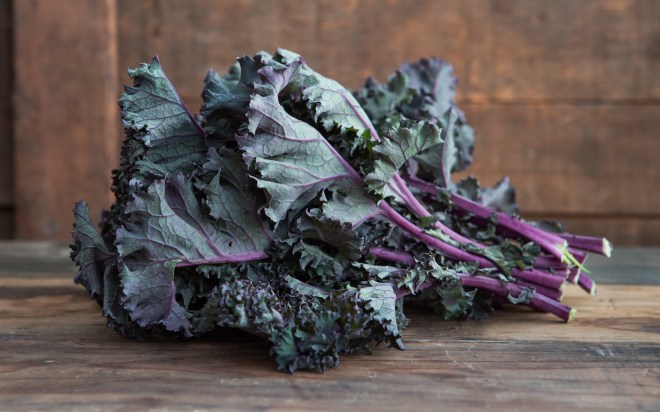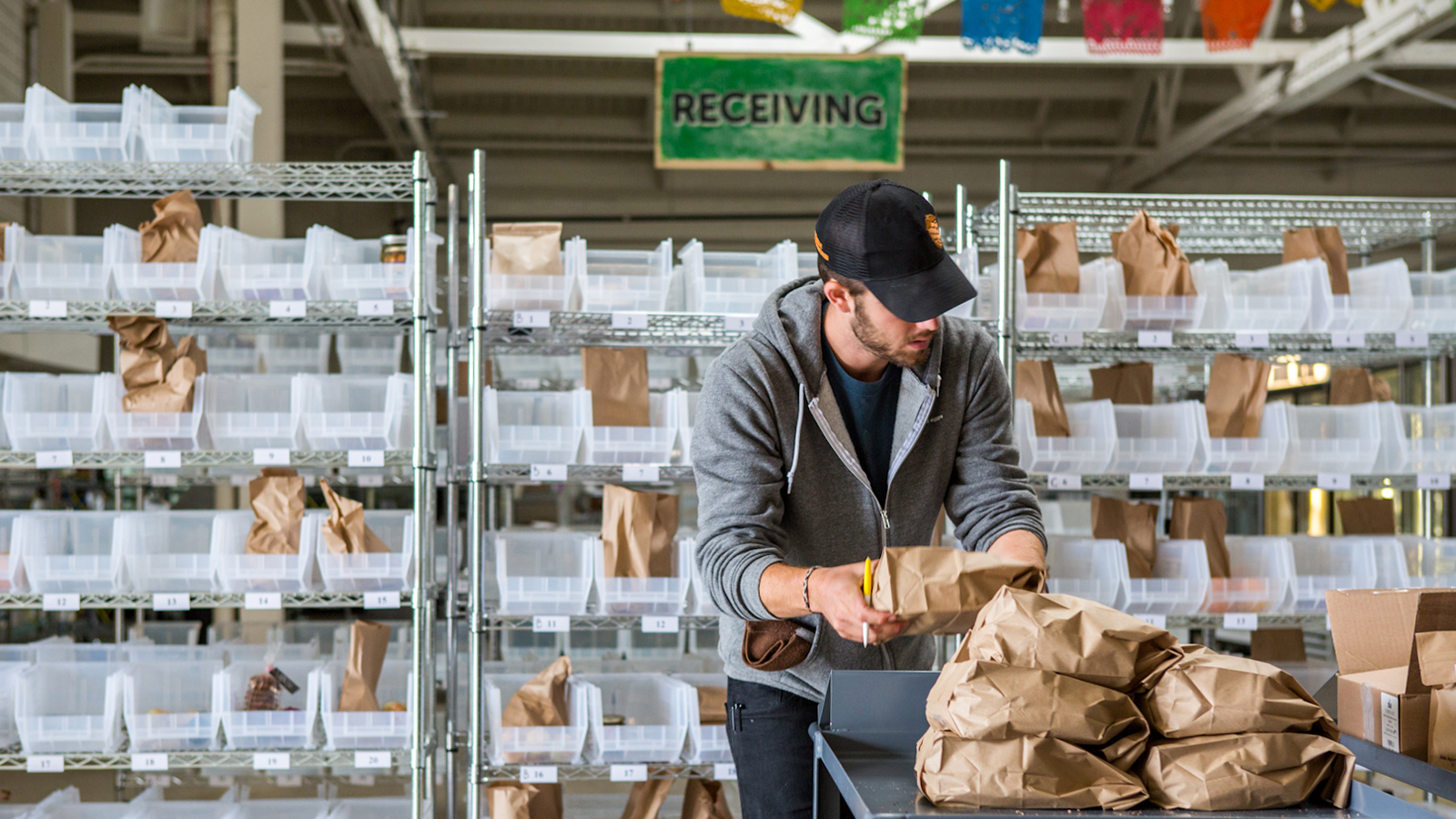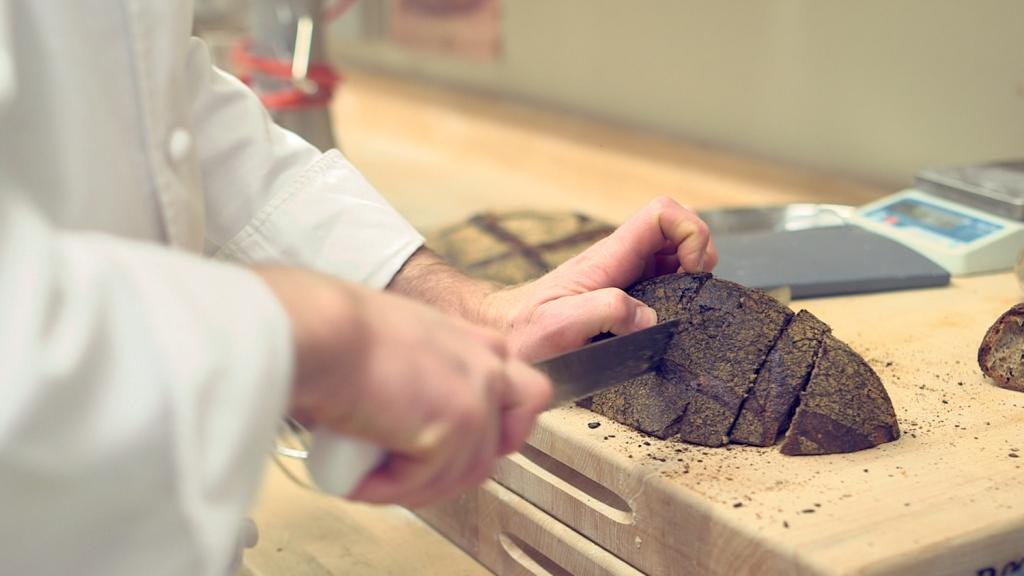To understand how a San Francisco startup set out to narrow the distance between farmers and buyers, you have to begin with Meat Club.
The year was 2010, and Kathryn Aaker had joined, despite all of the warnings and disclaimers in the Meat Club FAQ, because she, like the other members of Meat Club, was a believer. The San Francisco Bay Area was deep into a flesh-eating craze. The city’s ardor was powered partly by an earnest interest in local food and farmers — and partly by a city’s worth of vegetarians realizing that if, all this time, they had been shunning meat to protest animals’ mistreatment by factory farms, then buying from kindly local farmers meant they could eat steak again. Meat Club was a way for people to buy direct without having to buy a whole carcass and figure out how to store it. The club parceled out different cuts among club members according to personal preference and speed of dibsing.
[grist-related-series]
The person who ran Meat Club, Bonnie Powell, was one of those ex-vegetarians. (Powell is also creator of the website called The Ethicurean, and was, at one point, Grist’s food editor.) In 2002, Powell had founded the first meat CSA in the Bay Area, BAMCSA, as a way of helping local ranchers connect with people who really wanted to buy from them, but who couldn’t handle buying animals the way that most ranchers sold them — which was in whole, half, or quarter carcasses. By 2008, she’d started Meat Club as the next phase of this effort.
By 2010, Powell had a lot of experience in distributing animal parts. She had a system in place for managing sales and inventory that she’d developed through trial and error, and some pretty creative use of Google Docs. But Aaker knew how to code, and as she became more familiar with Meat Club and how it worked, she realized that she could write something for Powell that didn’t exist yet: bespoke software for selling meat.
At the time, Powell worked with two farms. One was Soul Food Farm, which at the time, was the Bay Area’s rock-star chicken provider. (In 2010, a chicken from Soul Food was the cover girl for San Francisco Magazine’s Best of the Bay issue.) But Soul Food eggs and chickens were also really expensive to raise — and hence, really expensive to buy. Many of the restaurants that had been Soul Food’s steady customers had cancelled their accounts during the 2009 recession, which was one reason the farm was developing a new customer base with the meat CSA.
But coming up with a new way to sell chickens — especially really expensive chickens — was also very, very complicated. There was a reason that our mainstream food delivery systems and farmers who were deeply concerned about animal welfare had diverged. The reason they had diverged was because letting animals do what they want is pretty much the opposite of what makes industrialized agriculture so efficient.
Take the birds themselves. If Meat Club members were paying a flat rate per chicken, that was the easiest way to bill people — but a CSA subscriber might get a really dainty chicken one month and a huge gladiator chicken the next one. Both situations led to trouble. A tiny chicken led to resentment on the part of the customer and a big chicken led to resentment on the part of the farmer, as well as everyone else who hadn’t managed to land a gladiator chicken that time around.
At the other Meat Club farm, Clark Summit Farm, there were similar issues. The pigs and cows were a mixture of different breeds, because the owners were trying to produce animals that were adapted to the local landscape. When they met their end, apportioning them out fairly to the CSA members was not easy. Not only were there only so many porkchops to go around, but every porkchop was different and special.
Aaker began putting together a program that would automate much of what Powell had been doing. It took about six weeks, working on nights and weekends, though it also helped that during that time, Aaker’s fiancé went on a long surf trip, which enabled her to go, as she put it, “full anti-social nerdville.” With the new system, Powell could send a list of orders to the farmer, who could then take the chickens out of the freezer, weigh them, and then use Paypal to charge each CSA member for exactly the number of pounds they were getting, and print out an individualized sticker label for each cut of meat.
Aaker named her project “Eggs” and posted it on Github for anyone to use. Although not many people did — and, strangely, the ones who did and got back to Aaker about it were using it for produce, not meat — the effect of it on Meat Club was immediate. Powell credits it with keeping the Meat Club going — on average, she said, it saves her about 10 hours a week of work.
Which raises the question: Why doesn’t this sort of thing happen more often? The Bay Area churns out a bewildering number of technological innovations every year. There a thousand ways to buy stuff, and a thousand ways to hire people to bring that stuff to your house, and then maybe put it together for you in your living room. There are ways to order cars for you to drive, and ways to order people to come and park your car, and ways to order people to come and pick you up in their cars and take you somewhere. There are as many ways to look for dates on the internet as there are kinds of beaks on the finch. So why, in the Bay Area, where small-scale agriculture and technology live so close to one another, is there not a similar crush to provide useful technology for the small-scale farmers whose food is a status symbol at so many tech company cafeterias?
“It’s easy to sell fake monkeys on the internet,” says Aaker, when I asked her. “Something like Farmville is the simplest. Pure software, just ones and zeros. Any time you are trying to span the digital and the real world, it gets hard. If you order a book, a human or a robot needs to pull it off a shelf, put a label on it, and send it to you. Something like Airbnb or Lyft — they’re even more complex, because they’re dealing with actual people, in the real world. But food — food is really hard. People don’t understand why one apple should cost more than another.”
“I don’t know any rich farmers. Their food should sell itself. But to make a living, a farmer also needs to be excellent at marketing – I think that’s unfair.”

Eggs was a one-time deal for Aaker. Today, she works at Stacker — a startup that builds tools for visual storytelling. But her project’s spirit in a small warehouse in San Francisco’s Dogpatch neighborhood, in one of the last industrial corners of the city, trucks from local farms pull up every evening and every morning at the roll-up door. Inside, a crew of a few dozen employees – all young and clean-cut –move food from one place to another very purposefully, while ambient techno plays in the background.
After Aaker wrote Eggs, Alon Salant, the fiancé (now husband) who was away on the surfing trip, kept on thinking about the same problems that Aaker found herself working through. Salant was also a programmer, and he thought that there had to be other ways to use tech to narrow the distance between farmer and eater.
A year later, in June, 2011, Salant and Rob Spiro, a former Google programmer with a farming background, officially started a new company: Good Eggs. Neither of them was quite sure what Good Eggs would be. They knew that they wanted to use technology to strengthen local food systems and give local food the kind of economic advantage that right now only streamlined, globalized supply chains had. Good Eggs had an “about” page with quotes from Wendell Berry and Michael Pollan. It has raised $31.5 million to date.
The earliest iterations of Good Eggs were more like an Etsy for vegetables: farmers posted what they had on the site, eaters ordered what they wanted, farmers delivered. On paper, it was incredibly efficient — farmers didn’t have to bring more food to town than they were going to sell because they already knew what people were buying. They didn’t have to stand around at the farmers market waiting for someone to decide whether or not their peaches were worthy. But it quickly became apparent that this didn’t work. Farmers didn’t have time to make deliveries; customers didn’t have time to wait for farmers to show up.
Hearing about the experience reminded me of something that Aaker said when we talked earlier. “When I built Eggs, I had a romantic notion,” she said, “that people should know their farmer. I was building this software to make that possible.” Now, she added, she knew that “knowing your farmer” is great for the consumer, but hard for the farmer — the farmer-to-customer ratio just didn’t work. Powell’s Meat Club was about making connections, but it was also, at its core, about protecting farmers’ time, because they just didn’t have enough of it. It was easier for them if they sold to just one point of contact.
In December, 2012, Good Eggs decided that grocery stores existed for a reason, despite their flaws: They took the inherent messiness at the heart of the food business and put a smooth, pleasant interface over it. “In the real world, stuff goes wrong,” says Salant. “The pickup breaks down. It’s raining, so no one can harvest strawberries. Someone forgets a bag of bread behind the door on their way out.”
So Good Eggs decided to become a grocery store — but one that held onto its products for as short a time as possible. Customers still order online, but farmers drop off the day’s orders at Good Eggs, where a crew of employees packs the day’s groceries into bags, loads them on a truck, and delivers them to homes and offices around the city.
The software that runs the whole operation these days now focuses on problems like “How to group the bags of groceries on the truck so that the truck can follow the most efficient route in the delivery?” and “How to get produce into and out of the warehouse as quickly as possible?” and “How to best keep it fresh while it’s there?” Even though Good Eggs not only finds and bags people’s groceries, but delivers them, too, Salant maintains that the operation is still cheaper to run than a traditional brick-and-mortar grocery store. The system can always be improving — the current goal is to cut down the wait time between order and delivery from a day and a half to under a day. But things are good. “When you’re a startup,” said Salant, when I visited the Good Eggs warehouse recently, “everything you do is an experiment. And eventually that experiment works.”
Good Eggs has a dry room, a freezer, and two different temperatures of refrigerator to keep perishables fresh. A warehouse at a wholesale produce market would have refrigerators running at as many as 10 different temperatures, all optimized for different fruits and vegetables. Most of its backstock is in the form of things like olive oil or jam, which Good Eggs sells on consignment so that a farmer can drop off a case at a time.
At its core, what happens at Good Eggs isn’t very different from what happens at a fulfillment center for Zappos or an Amazon warehouse — just with the added variables of time and decay thrown in. The profit margins in selling produce are lower than they are in selling shoes or books, because produce is complicated. But there’s a hidden link between the kind of efficiency today’s digital-driven startups seek and the old-school business of bringing food to market. Taiichi Ohno, the engineer who helped Eiji Toyoda develop just-in-time manufacturing — the framework that underlies so much of business logistics today — claimed that he based the approach on the efficiency of the American supermarket, rather than the automobile assembly lines of Detroit. The added factor of perishability made a supermarket a much leaner operation, and one to be emulated.
The list of muda — waste to be avoided — that Ohno and the Toyodas came up with were practically ecological:
- Waste of over production (largest waste)
- Waste of time on hand (waiting)
- Waste of transportation
- Waste of processing itself
- Waste of stock at hand
- Waste of movement
- Waste of making defective products

Good Eggs
San Francisco’s tech community, with its high wages, long work weeks, long commutes, and foodie ideals, has made the city the likeliest customer for a service that’s unlikely to ever be cheaper than a farmers market. When Good Eggs started, there were a few places that delivered groceries locally, though none of them seemed to do it with any enthusiasm.
In December 2013, Amazon began delivering groceries in San Francisco, something that it had been doing in Seattle for a long time. While Amazon’s Yelp reviews aren’t as stellar, and they buy from the same wholesalers that regular grocers do, I’ve noticed on my morning walks that Amazon seems to have a lock on my immediate neighborhood in the Mission — empty Amazon Fresh bags sit out on every third porch, waiting for pickup.
Salant — and others — have speculated that Amazon Fresh is less about getting in on the grocery delivery business, and more about bringing in enough business to maintain their own network of delivery trucks and warehouses. In an article about Amazon Fresh in Wired, one venture capitalist described the company’s future role in urban areas as being the milkman and the postal service all rolled into one — the person who delivers the milk and picks up the empty bottles, while dropping off packages and picking up returns.
Good Eggs is more strictly about local food networks than that. But it’s not interested in staying local itself. Venture capitalists are drawn to tech companies because of their scalability — and Good Eggs is no exception. It’s chosen to expand operations to three other cities, which were chosen because, as Salant puts it, “we’re optimizing for learning rather than growth.”
New York is appealing because it is a way to think through problems related to traffic and seasonality, since New Yorkers weren’t about to make it through the winter living off the tubers in some farm’s root cellar. New Orleans is a more working-class city, and Los Angeles had some strange distribution patterns that were worth studying. In the works is a mobile app that both farmers and customers can use. In the further future, the programming efforts will move further down the supply chain — for instance, creating simple inventory tools that farmers can use to monitor and share their own supplies.
As Salant gets into what those tools might look like, it gradually dawns on me that, out of all the capabilities that Good Eggs has, one of the things that it can’t do is what Aakers’ Eggs program did for Meat Club. Salant confirms this guess: while Good Eggs sell meat, it comes in standard cuts and sizes. It’s way too personalized and labor-intensive to do otherwise.
The successes in the first wave of dot-com companies were, says Salant, the easy wins: Sell ads. Put up restaurant reviews. The hardest industries are the ones that tech is still trying to break into — education, healthcare, and food. They’re the messiest, most real-world of businesses — sectors where a lot can go wrong. In the first dot-com boom, a grocery delivery service called Webvan was one of the most spectacular flame-outs of the ensuing crash. When this particular tech bubble bursts (or deflates), it remains to be seen how many of the startups in foodland stick around.
“We want to have massive impact on a global scale,” says Salant. “We want to be nationwide, worldwide. But we also have B-Corp certification. We’re not interested in working with people who don’t have our ideals. You don’t do this just to make money. You do this because it’s a way to shape the future.”
Then, he pauses. “I say this like it’s hard. You think running Good Eggs is hard? Try running a farm.”



